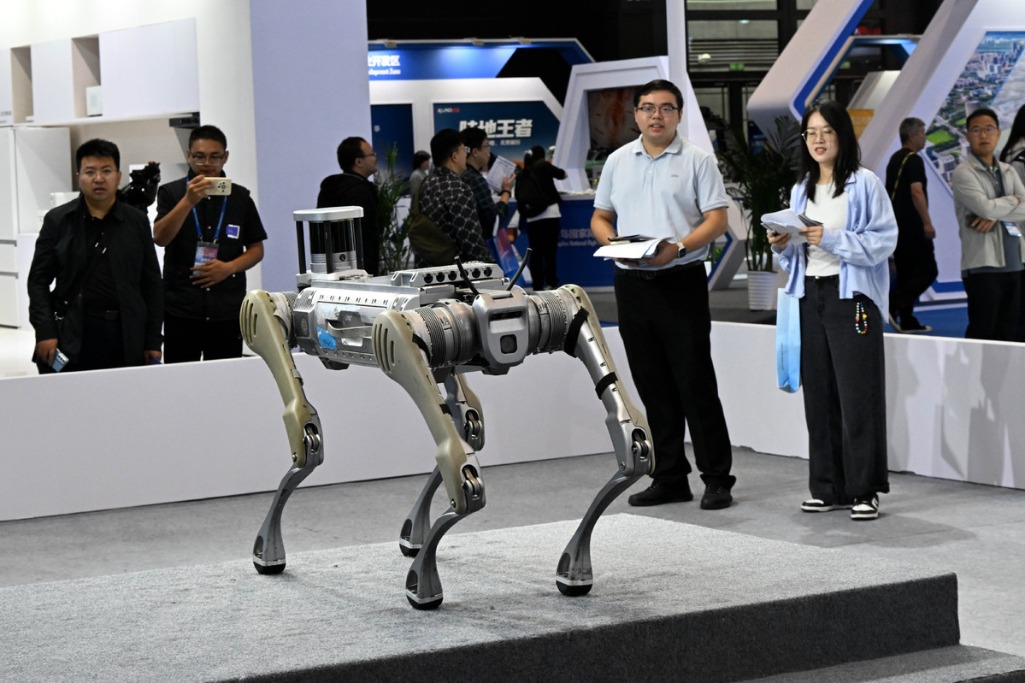Better income distribution can create demand


At the July meeting of the Political Bureau of the Communist Party of China Central Committee, the issue of insufficient domestic demand was labeled as a major challenge facing China's economy at present. Indeed, the insufficient domestic demand is putting serious pressure on the economy, which is weighing on enterprises, employment and debt sustainability.
How then to address such a difficult challenge? Before getting to the answer, it is necessary to understand what domestic demand actually entails. Simply put, domestic demand is domestic consumption and investment. And insufficient domestic demand means that demand for domestic consumption and investment is lower than the domestic supply capacity. And if a nation is also affected by weaker external demand apart from insufficient domestic demand, its economy will likely fall into a recession or even depression due to insufficient aggregate demand and excess production capacity. In severe cases, this can even lead to large-scale closure of enterprises and a large number of unemployed workers, which China is trying to prevent from occurring at present.
To spur domestic demand, there are two major catalysts — encouraging consumption and investment. The willingness to consume can be insatiable, but the same thing cannot be said of investment. Consumers tend to spend more if their purchasing power allows for such behavior. But, for investment, more is not always better — or advisable. The purpose of investment is to obtain returns, which is the primary driver and motivation for any willingness to invest in the first place. When returns are too low, investors are not likely to part with capital even if they have strong purchasing power.
Therefore, if a large amount of income, or purchasing power, flows to investors rather than consumers, and at the same time investors are a bit gun-shy due to insufficient returns, then the purchasing power in the hands of investors cannot be fully converted into purchasing behavior. Effective demand formed by the combination of purchasing power and purchasing willingness throughout the society will be lower than total supply, thus rendering domestic demand sub par. In this sense, the lack of domestic demand is essentially a problem of income distribution, which is the result of the failure of income distribution in the economy to correspond with spending appetites.
However, if the corporate sector, in a low return-on-investment environment, transfers its income to the consumer sector via dividends, thereby increasing income and consumption potential of consumers, the gap left by sluggish investment will be compensated by strong consumption, allowing domestic demand to remain at levels that match supply.
In China, the corporate sector holds most of the purchasing power. In the case of low willingness to invest, the nation tends to see a situation in which total purchasing power is sufficient while effective domestic demand is not. Therefore, as we see the issue, the fundamental reason for China's insufficient domestic demand is that there should be some adjustments in income distribution between the two major sectors of consumers and enterprises to solve the mismatch between purchasing power and willingness to spend.
In this case, to solve the challenge of insufficient domestic demand in China, efforts should be made to either increase incomes of consumers and solve the problem of insufficient purchasing power of the consumer sector or stimulate investment in the enterprise sector and solve the problem of insufficient willingness to spend. But if nothing is done at either end, the problem of insufficient domestic demand will be exacerbated by the decline in ROI, and eventually turn into an economic crisis of overproduction. Based on this very point, we see three directions for a way out.
The best solution may be to adjust income distribution and direct more income from the corporate sector to the consumer sector, thereby relaxing constraints on consumers' purchasing power and increasing consumption. This is a fundamental solution to promote consumption transformation and resolve the lack of domestic demand. Of course, income distribution adjustment could be difficult and slow. Before the completion of such an adjustment, the second choice available in China could be to increase the willingness of the corporate sector, or investors in this case, to invest — that is, to stimulate investment with macroeconomic policies.
Among manufacturing investment, infrastructure investment and real estate investment — which constitute the main body of China's total investment — the latter two should be the main targets to stimulate investment because they will not bring capacity expansion and aggravate the problem of oversupply. This is also why infrastructure and real estate investment have become the two main levers of China's steady growth for more than a decade after the subprime mortgage crisis in 2008.
There are also voices discouraging the second choice, as they argue it is simply making inefficient investments, which will lead to a series of problems such as debt risk and economic distortion. In their view, holding off on stimulus-based investment will clear the market of inefficiency and eliminate distortions, thus allowing the economy to shrug off its woes.
As far as we are concerned, the second option — though having drawbacks like inefficient use of funds and rising debt costs — is still better than the third strategy, which will lead to an economic crisis and oversupply. The root of China's insufficient domestic demand lies in its income distribution structure, and to a large extent, is the product of the current enterprise ownership structure. Limiting investment and allowing economic growth to decline will not automatically lead to an improvement in income distribution, not to mention addressing insufficient domestic demand. It will only make the shortage of domestic demand more serious. There were lessons before, such as the five-year-long depression and deflationary period from 1998 to 2002.
Therefore, at a time when income distribution reform has not made substantial progress and the proportion of consumer sector income in the economy is still relatively low, China should adopt measures toward the second direction to stabilize growth by stimulating investment, especially infrastructure investment and real estate investment. This is not the optimal choice, but it is the optimal one under the constraints of the income distribution structure, which will bring about an economic situation that is far better than the third one.
Of course, the above conclusion is reached considering only domestic circulation and without assessing the impact of foreign trade on the country. In fact, if external demand bounces back, it can certainly help the nation cushion against the pressure from insufficient domestic demand, and at least temporarily let China jump out of the trap of insufficient total demand.
At present, in the face of the economic pressure brought about by insufficient domestic demand and accompanying risks, stabilizing growth itself is the biggest risk prevention job for China and should be given top priority. Stimulating consumption without increasing household incomes, and with weak investment sentiment — these are the main reasons for the worsening problem of insufficient domestic demand. At present, China's economy urgently needs to ramp up efforts to stabilize the situation, buy more time, and then take steady steps toward structural adjustments, so as to keep economic growth on a steady track.
The writer is chief economist at BOC International, Bank of China.
The views do not necessarily reflect those of China Daily.



































